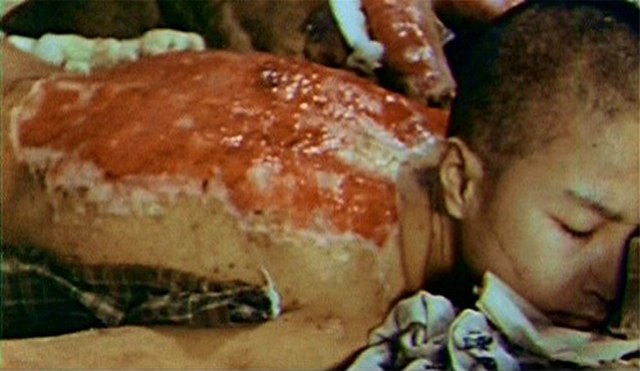Sadako Sasaki was a Japanese girl who became a victim of the atomic bombings of Hiroshima and Nagasaki by the United States. She was two years of age when the bombs were dropped and was severely irradiated. She survived for another ten years, becoming one of the most widely known hibakusha—a Japanese term meaning "bomb-affected person". She is remembered through the story of the more than one thousand origami cranes she folded before her death. She died at the age of 12 on October 25, 1955, at the Hiroshima Red Cross Hospital.
Sadako Sasaki in 1955
Sadako Sasaki in her casket, her body almost completely covered by flowers.
Japanese children all over the country create these little cranes in memory of Sadako Sasaki. Sadako and the cranes became a symbol for world peace in Japan after her death in 1955.
Japanese schoolchildren dedicate a collection of origami cranes for Sadako Sasaki in Hiroshima Peace Park.
Hibakusha is a word of Japanese origin generally designating the people affected by the atomic bombings of Hiroshima and Nagasaki at the end of World War II.
A hibakusha of Hiroshima, symptomatic nuclear burns; the pattern on her skin is from the kimono she was wearing at the moment of the flash.
Panoramic view of the monument marking the hypocenter, or ground zero, of the atomic bomb explosion over Nagasaki
Citizens of Hiroshima walk by the Hiroshima Peace Memorial, the closest building to Ground Zero not to have collapsed from "Little Boy".
A photograph of Sumiteru Taniguchi's back injuries taken in January 1946 by a U.S. Marine photographer








